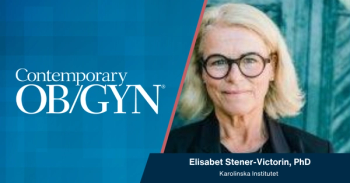
Grand Rounds: Counseling patients on breast reconstruction
Losing a breast or a part of one to disease is traumatic for any woman. Proactive, thorough, and compassionate counseling on reconstructive options is the ob/gyn's responsibility and can help ease a patient's overall recovery.
Breast reconstruction has become so common that it's often taken for granted, but 20 years ago, it was rarely performed.1 Modern breast reconstruction's increasing frequency and sophistication are attributable to several factors. First are significant technologic advances in surgical technique, including microsurgery, which have made it possible for plastic surgeons to move the large portions of tissue necessary for recreating a breast.2
The appearance and safety of prosthetic devices for non-autologous breast reconstruction, too, have substantially improved.3 Another factor is the fundamental change in surgical oncologists' approach to mastectomy. Skin-sparing techniques are now becoming the standard of care.4,5 And maintaining overlying skin is crucial for optimizing the aesthetics of a subsequent breast reconstruction. Perhaps the most important impetus for breast reconstruction is awareness by both patients and their ablative surgeons that the procedure is a viable option for nearly every woman undergoing mastectomy. Taken together, these factors explain why nearly 25% of women choose to have breast reconstruction today, compared with only 3.4% in the late 1980s and early 1990s.6
The how and why of breast reconstruction
Once a woman decides to proceed with reconstruction, the next step is for the surgeon to develop a plan that takes into account a number of interrelated variables. Among them are the patient's general health, whether the reconstruction will be immediate or delayed, what type of defect/mastectomy is expected, whether sufficient autologous tissue is available, and how likely the woman is to need adjuvant chemotherapy or radiation. Other, more subjective parameters that should be considered are the woman's tolerance for multiple procedures or revisions, her willingness to accept prosthetic devices, and her desire to minimize "down time" associated with major surgery.
Patient health. In general, breast reconstruction is medically contraindicated in very few patients. But some women may be candidates only for placement of a tissue expander with plans for a permanent implant several months later because an autologous procedure would involve too much time in the OR and too much blood loss. Tell any woman who plans to undergo reconstruction that she must stop using tobacco at least 3 weeks before the procedure and that if she fails to do so, she may have significant problems with wound healing.11 Likewise, diabetic patients need to strictly control their blood glucose levels in anticipation of surgery.
Timing of surgery. Optimal timing of breast reconstruction deserves much thought. Studies indicate that breast reconstruction after mastectomy is integral to minimizing the psychological trauma of the event, but other considerations-such as the need for postoperative radiation or chemotherapy-must be weighed.12,13 Breast reconstruction done at the same time as mastectomy is optimal for both practical and psychological reasons, but the main drawback is the negative impact that subsequent therapy, particularly radiation, can have on the aesthetic result. Studies show that radiation therapy (RT)-related sequelae, such as fibrosis and fat necrosis, can lead to flap shrinkage and displacement of autologous reconstructions, and it may also promote significant capsular contracture of prosthetic reconstructions.14,15 Because of these potential problems, many plastic surgeons will opt to delay reconstruction in women who are very likely to need postoperative RT.16,17 Adjuvant chemotherapy, on the other hand, has not been shown to have a negative effect on breast reconstruction and the surgery does not significantly delay delivery of chemotherapy.18-20
Newsletter
Get the latest clinical updates, case studies, and expert commentary in obstetric and gynecologic care. Sign up now to stay informed.
















